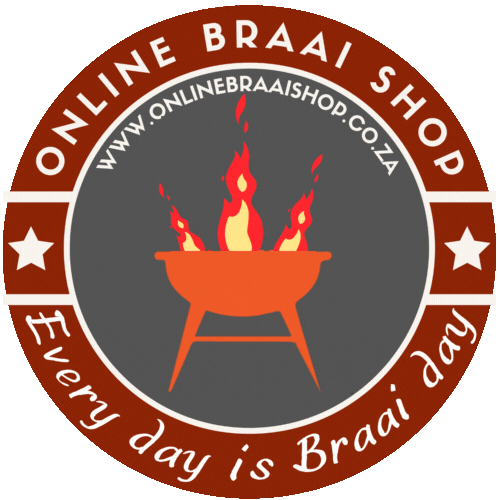
Braai or BBQ - Same but different?
If you love outdoor cooking, you might have wondered what the difference between a BBQ and a traditional braai is. While both methods involve grilling meat over an open flame, they have distinct origins, techniques, equipment, food and flavors. In this blog post, we will explore the differences and similarities between these two popular ways of preparing delicious meals.
The word braai comes from the Dutch braden, meaning 'to grill', and is an abbreviation of braaivleis, meaning 'grilled meat'. It is a term used in South Africa and other parts of Southern Africa to describe a social gathering around a fire where meat and other food are cooked. Once there are enough hot coals, a grill is placed over the fire. The meat—ranging from lamb, beef, chicken, and pork to exotic options like springbok, warthog, and ostrich—is grilled to perfection. But a braai is much more than just grilling meat over an open flame—it’s a cherished tradition that brings family and friends together in celebration. Gas grills don’t count as a real braai!

The word barbecue or barbeque comes from the Caribbean word barbacoa, which originally referred to a wooden structure used by Taino Indians to smoke their food. It is to prepare by seasoning and cooking usually slowly and with exposure to low heat and to smoke. It is a term used in many parts of the world to describe a method of cooking food over a fire or hot coals. The term “barbecue” has different spellings and associations across the globe: In the United States, UK, and Canada, it’s commonly abbreviated as “BBQ.", and In Australia and New Zealand, it’s affectionately called a “barbie” or “barby.”
One of the main differences between a braai and a BBQ is the type of fire used. A braai is usually done with wood or charcoal, while a BBQ can be done with gas, electric or pellet grills. A braai also tends to keep the fire going for longer than a BBQ, even after the food is cooked, as people gather around it for socializing and warmth. A BBQ is more likely to end when the food is ready and served.

Another difference is the type of food cooked. Braaiing / Grilling is cooking foods hot and fast. A braai typically features various kinds of meat, such as boerewors (a spiced sausage), steak, chicken, lamb, pork and sometimes game meat. The meat is often marinated or seasoned with spices, herbs and sauces before or during cooking. Grilling is done over direct heat, where the flame (either gas or charcoal) is directly below the meat. A braai may also include side dishes such as baked potatoes, corn on the cob, gem squash and salads.
Barbecuing is usually used for cuts of meat like ribs, pork shoulder, beef brisket, or whole chickens or turkeys. These types of meats tend to be tougher, and need the low, slow heat of a barbecue in order to get them good and tender. The food is usually seasoned with salt, pepper, barbecue sauce and other condiments.
A third difference is the cooking technique. A braai involves direct heat from the coals or flames, which sears the meat and gives it a smoky flavor. The meat is usually turned frequently to prevent burning and ensure even cooking. A BBQ can involve direct or indirect heat, depending on the type of grill and food. Indirect heat means that the food is cooked away from the heat source, usually with the lid closed. This allows for slower and more even cooking, especially for larger cuts of meat.
A final difference is the cultural significance. A braai is more than just a way of cooking; it is a way of life for many South Africans. It is a symbol of hospitality, friendship and celebration. It can happen at any time of the year, for any occasion or no occasion at all. It is a tradition that brings people together across different backgrounds and cultures. A BBQ can also be a social event, but it may not have the same level of importance or frequency as a braai. It may be more associated with certain seasons, holidays or regions.
In conclusion, a braai and a BBQ are both enjoyable ways of cooking food over a fire, but they have different origins, techniques, equipment, food and flavors. They also have different meanings and roles in their respective cultures. However, they also have some similarities: they both involve grilling meat over an open flame, they both create delicious meals that can be enjoyed with friends and family, and they both reflect the diversity and creativity of human cuisine. The essence remains the same: good food, friends, and the magic of fire and smoke.

